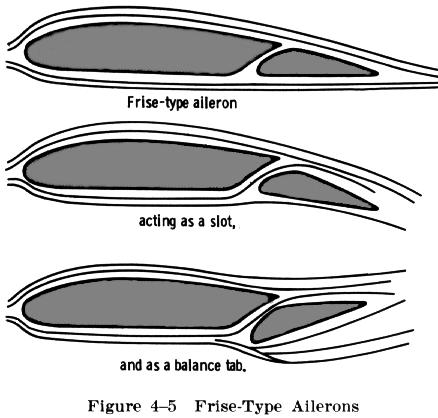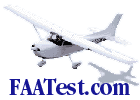| Differential Type Ailerons
Though not entirely eliminating adverse yaw, the "differential
type" aileron system raises one aileron a greater distance than the other
aileron is lowered for a given movement of the control stick or wheel. In this
case, since the raised aileron has as much or more surface area exposed to the
airflow (thus increased drag) than the lowered aileron, the adverse yaw is
greatly reduced.
| Frise Type Ailerons
The design of the aileron surface itself has also been improved by the
"Frise type" aileron. With this type of aileron, when pressure on the
control stick or wheel is applied to one side, raising one of the
ailerons, the leading edge of that aileron (which has an offset hinge)
projects down into the airflow and creates drag. This helps equalize the
drag created by the lowered aileron on the opposite wing and thus reduces
adverse yaw (Fig. 4-5).
The Frise type aileron also forms a slot so that the air
flows smoothly over the lowered aileron. This helps to make the aileron
more effective at high angles of attack. However, despite these
improvements, some rudder action is still needed whenever ailerons are
applied. |
 |
 |
FAATest.com
- Aviation Library
Dauntless
Software hosts and maintains this library as a service to pilots
and aspiring pilots worldwide. Click
here for ways to show your appreciation for this service.
While much of this material comes from the FAA, parts of it are (c) Dauntless Software, all rights reserved. Webmasters: please
do not link directly to individual books in this library--rather,
please link to our main web page at www.dauntless-soft.com or
www.faatest.com. Thanks! |
|

